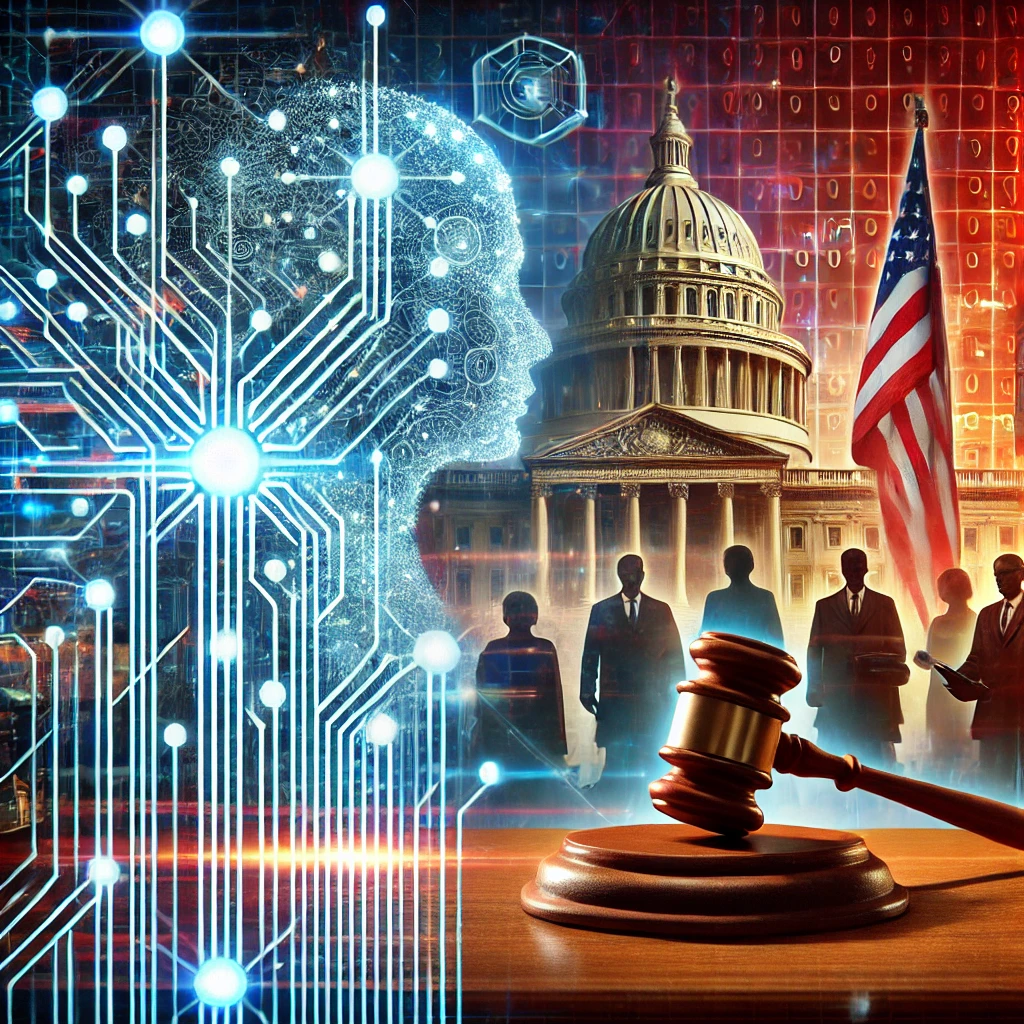Adres
Polska, Warszawa

Artificial Intelligence (AI) is rapidly advancing, and its trajectory is heavily influenced by policy decisions. With Donald Trump’s election as U.S. president, the AI industry is poised to undergo significant changes, with potential shifts in governance, regulation, and innovation. This article explores the potential implications of Trump’s policies on AI, highlighting key developments, challenges, and opportunities..
Repealing Biden’s AI Executive Order
One of Trump’s prominent proposals is to repeal President Joe Biden’s executive order on AI, which established a framework for ensuring the safety and trustworthiness of advanced AI systems. The key components of Biden’s order included:
1. Mandatory Foundation Model Testing: Companies developing foundation AI models were required to notify the federal government and share safety test results to mitigate risks related to national security and public health.
2. Ethical and Security Measures: The order emphasized preventing AI-powered fraud, enhancing cybersecurity, and mitigating risks of AI misuse, such as engineering dangerous biological materials.
Promoting Deregulation and Innovation
Trump’s administration is expected to focus on deregulation to accelerate AI development. Proposed measures include:
1. Reducing Regulatory Burdens: Streamlining processes to enable quicker deployment of AI systems without extensive compliance checks.
2. Military Advancements: Initiatives such as “Manhattan Projects” aim to boost AI-driven military capabilities, positioning the U.S. as a global leader in defense technology.
3. Addressing Energy Challenges: Trump has raised concerns about AI’s energy demands, urging strategic planning to expand electricity production to meet future needs.
“Artificial intelligence isn’t just about machines learning; it’s about humanity teaching machines the values we hold dear.”
Anonymous Visionary
Key Stakeholders Influencing AI Policy
JD Vance: Advocate for Open-Source AI
As vice president, JD Vance emphasizes the importance of open-source AI, advocating for policies that prevent monopolization by tech giants like Google and Microsoft. This approach aims to ensure equitable access to AI technology.
Elon Musk: Driving Innovation
Elon Musk’s support for Trump and his involvement in AI ventures like xAI underscore his influence on AI policy. Musk advocates for less restrictive regulations, which he believes will spur innovation while highlighting the need for addressing AI’s significant energy requirements.
Innovations Shaping the AI Landscape
Recent advancements in AI tools demonstrate the industry’s growing diversity and potential:
1. Runway ML’s Camera Control: A breakthrough in video editing, allowing users to manipulate camera angles in AI-generated videos.
2. Bytedance’s Expression Mapping Technology: Tools that replicate human expressions in real-time for AI-generated characters.
3. Collaborations in Defense AI: Companies like Meta and Anthropic are partnering with U.S. defense agencies to enhance intelligence capabilities through AI.
Challenges and Opportunities
Balancing Innovation with Safety
While deregulation may foster rapid growth, it poses risks of unethical AI use and safety breaches. Policymakers must strike a balance between innovation and regulation.
Preparing for Infrastructural Demands
The increasing energy needs of AI systems require robust infrastructure and expanded power production to support growth sustainably.
The policies under Trump’s presidency will likely reshape the U.S. AI landscape. While they promise to reduce bureaucratic hurdles and accelerate innovation, the industry must navigate ethical concerns, safety issues, and infrastructural challenges. Collaborative efforts between stakeholders are essential to ensure that AI development benefits society while mitigating risks.
.